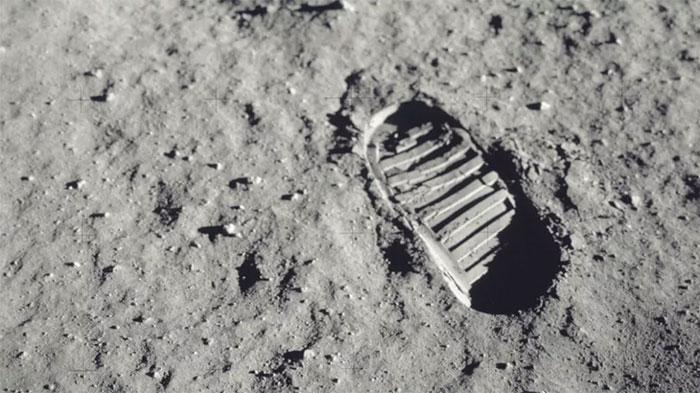The answer depends on many factors such as travel speed, time traveled per day, and route to avoid dangerous terrain.
Twelve people set foot on the moon during the Apollo mission from 1969 to 1972. Documentary footage shows that traveling – specifically, jumping – on a planet with only one-sixth the gravity of Earth is quite interesting.
However, research by the United States Aerospace Agency (NASA) shows that humans can travel on the Moon at a faster speed than Apollo astronauts. Theoretically, the time taken to walk around the Moon is shorter than previously estimated.
During the Apollo mission, astronauts “jump” to the moon at a speed of about 2.2 km / h. According to NASA, this speed is quite slow due to the bulky astronaut suit, containing the pressure. If you wear a more comfortable outfit, the movement will be easy and the maximum speed can be reached.
A 2014 NASA study, published in the Journal of Experimental Biology, examined the walking and running speed of people in an environment simulated for the gravity of the Moon.
According to Live Science, the team invited eight people (including 3 astronauts) to use the treadmill on the DC-9 jet. The plane is flown on a special parabolic trajectory, simulating gravity on the Moon for up to 20 seconds.
Test results show that participants can walk up to 5 km / h before running. Not only twice the speed of astronaut Apollo, this figure is almost equal to the average maximum walking speed of humans on Earth (7.2 km / h).
The above speed is achieved because the participants can walk while swinging their arms. This movement creates a downward force, compensating for the lack of gravity. One of the reasons astronauts on the Moon move slowly is not being able to swing their arms due to the tight suit.

If the above speed is applied (5 km / h), it will take approximately 91 days to travel the 10,921 km circumference of the Moon. During this time, it takes 334 days to continuously travel the entire circumference of the Earth (40,075 km). Of course, this cannot happen because the Earth has oceans.
The same factor also applies on the Moon. 91 days is just a number under ideal conditions. In fact, it will take longer to walk around the Moon.
Determine the roadmap and influencing factors
Aidan Cowley, scientific adviser to the European Space Agency, says walking around the moon is a possible task, but “too strange to be helped”. One of the biggest challenges, he says, is the supply of water, food and oxygen.
“I don’t think you would put them in your backpack because the masses are so large, even in environments with 1/6 gravity (relative to Earth),” Cowley said, We also need a support vehicle. a shelter.
“Many agencies are considering the idea of a pressurized rover, which will help astronauts in their exploration missions. They look like mobile bases, to store supplies and sleep at night, ”says Cowley.
Adventurers also need optimal combinations for mobility. Astronaut clothing is currently not designed for strenuous activity, but some agencies are developing better-fitting suits, allowing wearers to freely swing their arms while walking on the moon.

The Moon’s rugged terrain makes it difficult to find the right route, especially craters several miles deep. Light and temperature are also two factors to note.
“At the equator (of the Moon) during the day the temperature rises by about 100 degrees Celsius. At night it drops to -180 degrees Celsius,” Cowley said.
The lunar cycle leaves some days with very little or no sun. Therefore, at least half of the trip will take place in the dark. The temperature problem can be solved with rovers and clothing, but it also changes the state of regolith – the thin gray soil that covers the bottom of the Moon – which affects movement speed.
Solar radiation is a big problem. Unlike the Earth, the Moon does not have a magnetic field which deflects radiation. “If the Sun flares up or releases aurora material (CME), your condition will be very bad if your body is affected by the high radiation from the Sun,” Cowley said.

The last element of the quest is physical fitness. Participants need long-term exercise in low-gravity conditions so that the heart and muscles adapt.
Even when everything is ideal, a person can only walk at full speed for 3-4 hours / day. If you maintain the speed of 5 km / h for 4 hours / day, it will take 547 days (almost 1.5 years) to go around the circumference of the Moon, in the road condition without crater, this Will not be affected by temperature changes or solar radiation.
Cowley believes humans will neither have the technology nor the equipment for this task, at least until the 2030s or 2040s.
“No agency will support such missions. But if a crazy billionaire wants to try, he’ll shake hands, ”Cowley said.


